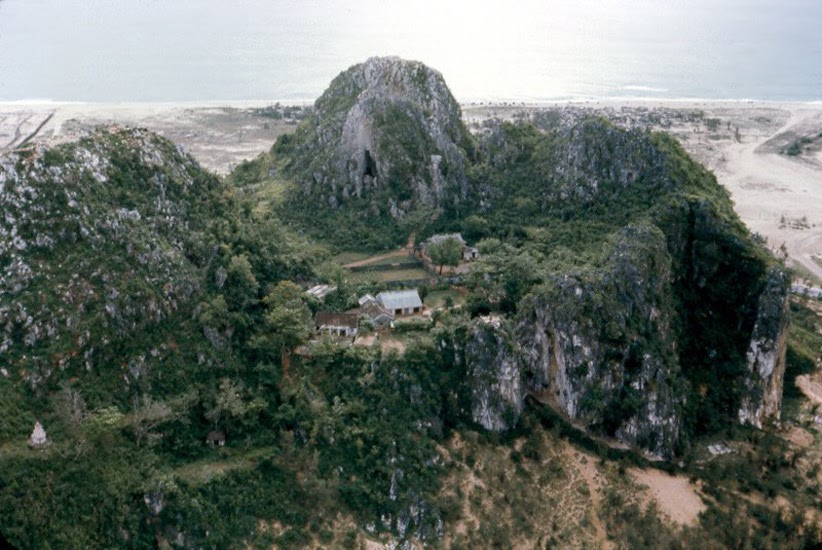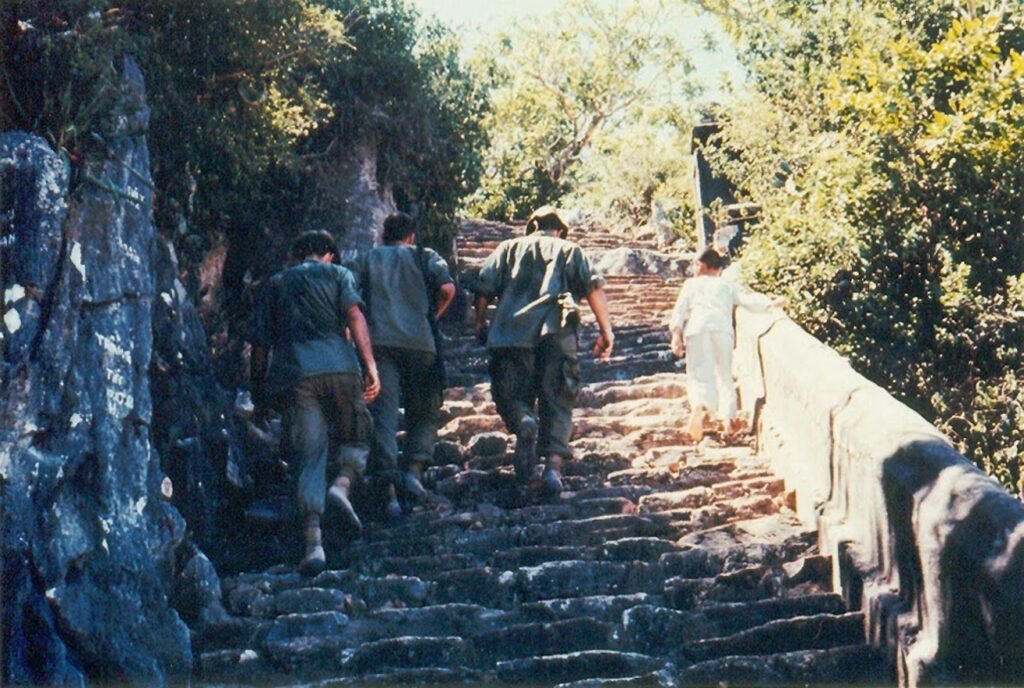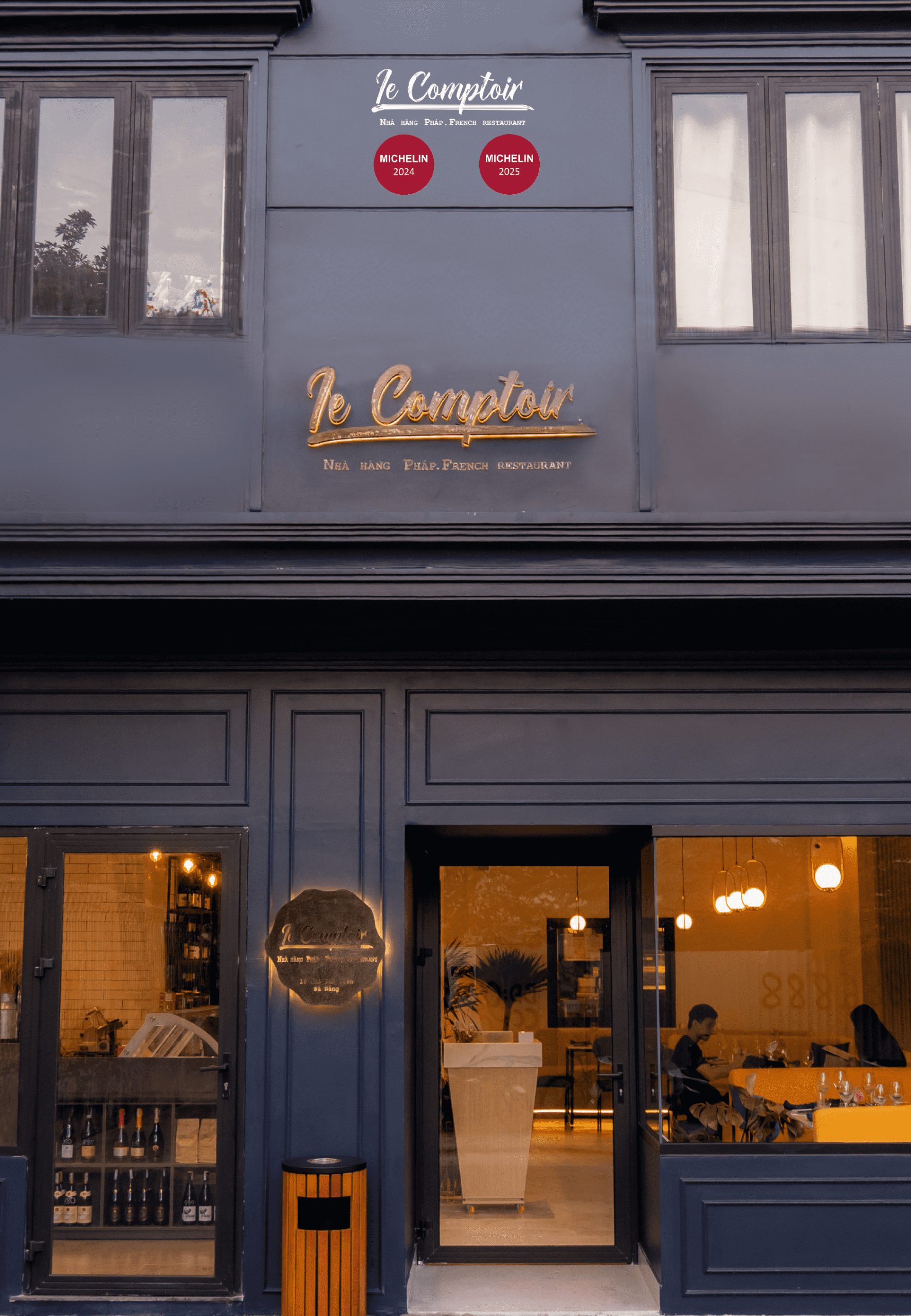Marble Mountain is not just a place for travel and exploration, this destination also is a place that saves a lot of value about the history, culture, feng shui, and archaeology,… of Da Nang city.
About Marble Mountain
Marble Mountain or can be calling by Non-Nước Mountain is a common name for the mountain in sand land in Ngu Hanh Son district, Da Nang city. It includes 5 small mountains: Metal Mountain, Fire Mountain (Including Yang – Fire Mountain and Ying – Fire Mountain, Water Mountain, Wood Mountain, and Earth Mountain, followed by the name of 5 elements that create this world.
From the center of Da Nang city, drive straight way to Hoi An ancient town, it’s elementary to recognize Marble Mountain standing on the right.
According to geologists, Marble Mountain was once a group of islands connected to the mainland, but through time, it was deposited by the tides to become what it is now.
These mountains gradually change due to climate and rainfall, resulting in intriguing caves and rocks with distinctive colors on each mountain: Water Mountain (Thủy Sơn) is pink, Wood Mountain (Mộc Sơn) is typically white, Fire Mountain (Hỏa Sơn) is typically red, Metal Mountain (Kim Sơn) is colored like water, and Earth Mountain (Thổ Sơn) is typically brown.
Marble Mountain has evolved into a popular tourist destination for both domestic and international travelers over a long period of time, having seen historical events and serving as one of the locations to conserve culture.
Marble Mountain In Folk Legend
The five mountains are perhaps 5 pieces of dragon egg that were transformed into, according to the Da Nang folklore that has been passed down to this day.
Once upon a time, an elderly man lived alone on a lonely seashore in a little cottage. Naturally, there was a strong stormy area one day in the open sea, making the sky dark. A very large dragon once came to the coast and laid a huge egg. The dragon (Vietnamese is Giao Long – English is Serpent Hag, one kind of Water Monster) then dived into the water and disappeared.
A large golden tortoise came from the water a little while later and buried its eggs in the sand. Turtle introduced the elderly man to the god Kim Quy and instructed him to take good care of Long Quan’s egg (Long Quan is the king of the ocean). The old guy received a magic nail from the god Kim Quy at the same moment as protection.
The egg grew bigger and bigger over time. One day, thugs set fire to the elderly man’s cottage. The old guy begged for assistance from the turtle’s claws. A cave with enough beds readies suddenly appeared in the center of the egg. The old man sat down, and as soon as he did, he was asleep.
A newborn girl was then emerging from an egg next to the elderly man’s bed. The small girl is fed milk that pours from the cave’s stone veins so she can develop into a blowing adult. Every day, monkeys collect fruit for her to eat, and cuckoos weave cotton for her clothing.
The elderly guy who had been sleeping for a while was startled to awaken and discover a lovely young woman seated next to him. The egg had also been shattered into five pieces, each of which had transformed into a massive mountain range with lush greenery, birds, and humming animals.
From this moment on, the elderly man raised and cared for Long Quan’s daughter as though she were his own child. They also dedicated their time to help poor people. Soon after, the king heard of a stunning fairy and dispatched a military officer to bring an offering in order to ask her to marry him and become his wife. The elderly man then sat atop the tortoise and disappear.
Saving the Cham culture
Da Nang city and the renowned Marble Mountains were once coastal areas in the Ri (Ly) continent that belonged to the Champa Kingdom’s Amaravati state.
According to French scholar Dr. Albert Sallet, Marble Mountain was once a natural coral island, suggesting that it may have served as a pirate ambush site or a shelter for people. The Cham people may have an available network “the limestone blocks rising like the horns, which are natural castles and strongholds to protect and guard the sea” to their advantage.
By the VII–XI centuries, the area at the foot of the Marble Mountain had grown into a thriving and active “village – town” acting as a “satellite” of important commercial ports and the main focus. A tiny commerce hub used to consume, transparent, and gather products for exchange with merchant ships traveling along the “international silk road” from China, Arabia, and other nations, efficiency at sea. During this time, the summit of Marble Mountain also developed into a place of spirituality and religion where the Champa people could express their reverence for the supreme gods.
With their historic union in 1306, King Che Man (Jaya Simhavarrman III) and Princess Huyen Tran presented the Dai Viet nation with a big betrothal gift in the form of two continents, Chau O and Chau Ly. The peaceful transition of power between these two kingdoms laid the groundwork for the Vietnamese to adopt, and pass down, and Vietnamese the religious institutions, traditions, and beliefs of the Champa people of the Marble Mountains.
Vietnamese immigrants from the North invaded, conquered, and lived in the Hoa Khue and Quan Khai villages at the base of Marble Mountain between the 15th and 16th centuries. The two cultural systems of Vietnam and Cham were strongly exchanged, linked, and integrated, leaving the land of Ngu Hanh Son with more unique impressions. The most striking aspect is the interference with beliefs and religions in particular.
The architecture and caves bearing the imprint of the ancient Champa culture are shown and are still preserved and protected to this day, behind the area of Linh Ung Pagoda.
Marble Mountain in the war
Vietnam and France went to war from the second half of the 19th century until the start of the 20th. The area of French concessions was Da Nang. Ngu Hanh Son was selected as the base of numerous soldiers’ efforts in national movements at the time due to the terrain’s advantages.
The French colonialists and the US Empire both thought the Marble Mountains and the southeast of the city to be an important military position during the era of 1945 to 1973, with the participation of the US in the Indochina war, thus they both tried their best. At the base of the mountain, fortified stations were built, and soldiers were sent there to guard the zone.
At that time, Tam Thai Pagoda and Linh Ung Pagoda served as the grounds for hiding and protecting the revolutionary army, and the Bo De Cave of Metal Mountain was a natural rock cave that was the site to secure safety in all circumstances.
Surgery and treatment facilities for injured soldiers are located in particular in the Hell Cave. By 1975, Da Nang had been fully liberated, and the government had conserved, renovated, enhanced, and promoted the Marble Mountain picturesque area.
Marble Mountain’s picturesque area was the historical site at the National level on July 10, 1980.














